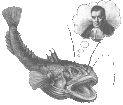UW Aquatic & Fishery Sciences Quantitative Seminar
Pierre Gloaguen
Unit of Fisheries Ecology and Modelling, IFREMER
Using stochastic differential equations to model fishing vessels displacement
Abstract
Understanding the dynamics of fishing vessels is essential to characterize spatial distribution of fishing effort on a fine spatial scale, to estimate the impact of fishing pressure on the marine ecosystem and to anticipate fishermen reactions to management measures. Mandatory Vessel Monitoring System (VMS) data provide GPS positions of the French fleet performing in the Eastern English Channel, which can be used to analyze fishing vessels movement at a small scale.
We assume that fishing vessel trajectories are guided by an underlying potential map P, which values at a point spatial point X define the attractiveness of this point. The goal of the study is to use observations of fishing vessel trajectories to infer this map.
Formally, considering a fishing vessel as an individual, we denote by {Xt}t≥0 its position process, observed at discrete times t1 . . . tN . The process is supposed to be the solution of a stochastic differential equation:
dXt = ∇P(Xt)dt + γdWt (1)
where ∇ denotes the gradient operator, P(X) : R2 --> R is the potential map, γ is the diffusion parameter, and W is the standard 2-D Brownian motion. I will present a Monte Carlo Expectation Maximization (MCEM) approach, based on exact simulation algorithms (Beskos et al, 2006), to estimate the underlying map P(·).

